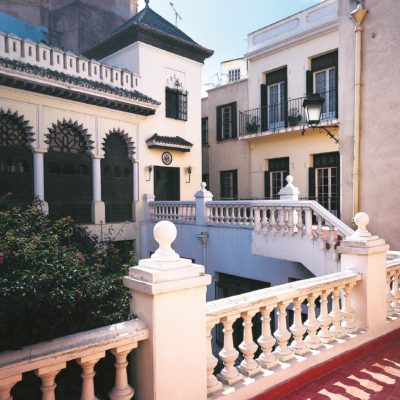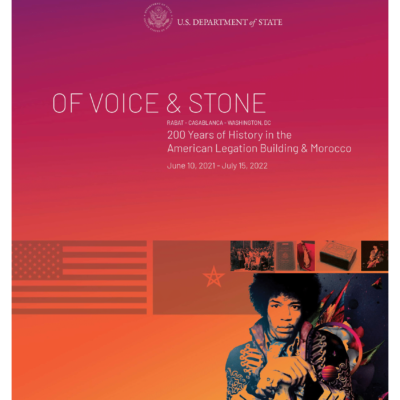TANGIER OLD LEGATION
Tangier, Morocco
Year Built / Altered
1821 / 1927–1951
Year US Acquired
1821
Architect / Style
Moorish
Tangier Old Legation, the first property acquired by the U.S. government for a diplomatic mission, was presented in 1821 as a gift to the American people by Sultan Moulay Suliman. His generosity was inspired by the success of the Moroccan-American Treaty of Friendship. This 1786 treaty, with John Adams and Thomas Jefferson as signatories, was renegotiated by John Mullowny in 1836. The treaty, still in force today, is among the most durable in American history. The Old Legation was a diplomatic post for a record 140 years. Of special significance in the building’s history is the Cape Spartel Lighthouse Treaty of 1860, which was negotiated there. The treaty is considered the forerunner of the League of Nations and United Nations because it speaks to broad cooperation within international law.

Located within the ancient city walls, the original structure, an eighteenth-century stone building, was gradually incorporated into an enlarged complex surrounding a picturesque courtyard. U.S. Minister Maxwell Blake undertook an ambitious program of restoration and renovation from 1927–1931. He constructed a Moorish pavilion overlooking a new courtyard, which incorporated antique doors and tiles from different areas of Morocco. Blake also added handsome eighteenth-century lanterns, iron grillwork, and marble mantelpieces. The result is a harmonious blend of Moorish and Spanish architectural traditions. World War II activity included a major U.S. military contribution to the Allied presence in Africa at the strategic entrance to the Mediterranean. The property was used by the then newly formed Office of Strategic Services, and it was the locus of military planning operations in North Africa that led to the landings in France and Italy. When the Consulate General moved in 1961, the property became an Arabic language school.
Since 1976, the compound has been leased to the Tangier-American Legation Museum Society, a public non-profit organization established by a group of American citizens. The museum maintains a collection of engravings, maps, rare books, aquatints, paintings, and other artifacts depicting events in the history of U.S.-Moroccan diplomatic relations. The Legation was listed on the U.S. National Register of Historic Places on January 8, 1981. U.S. Secretary of the Interior James G. Watt subsequently designated it a National Historic Landmark on December 17, 1982. The Tangier Old American Legation National Historic Landmark is the only such designation in a foreign country.
SUPPORT FURTHER PRESERVATION
This property is supported by our non-profit partner, The Fund to Conserve U.S. Diplomatic Treasures Abroad.






